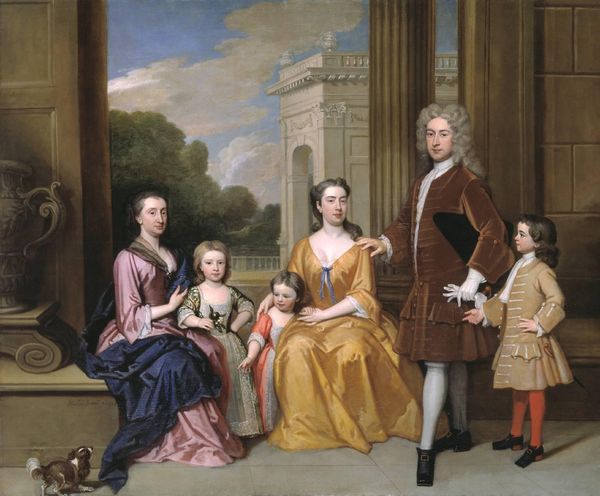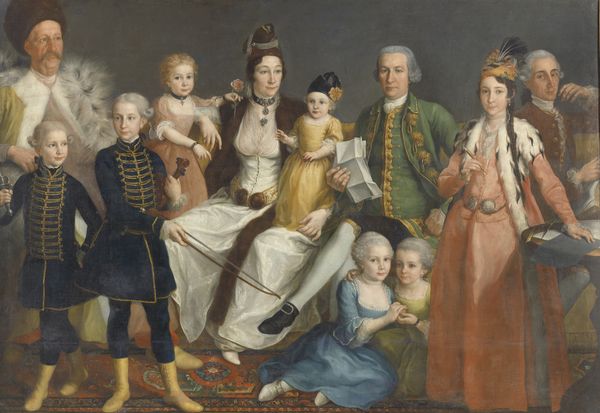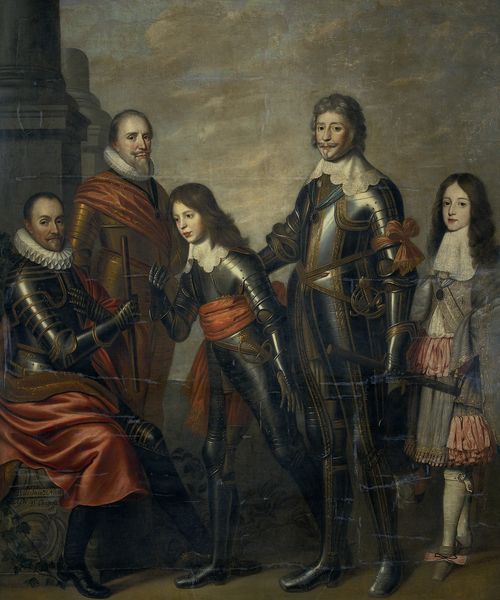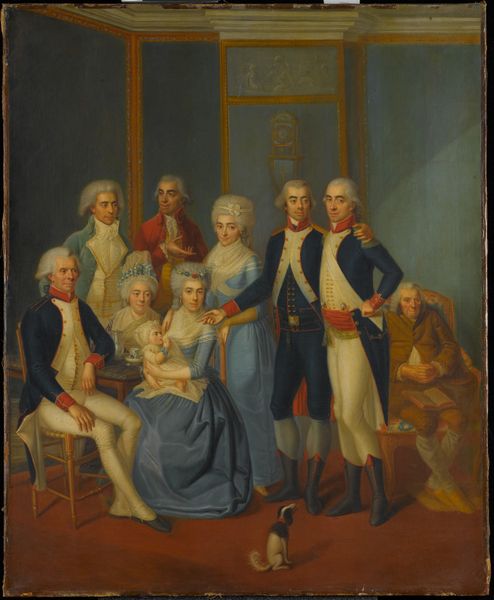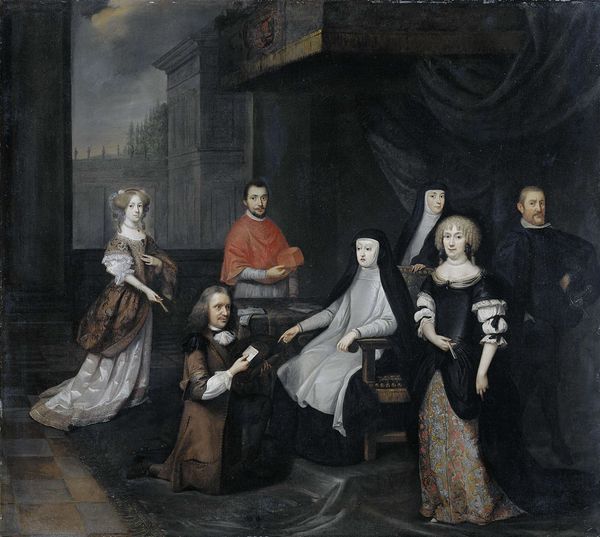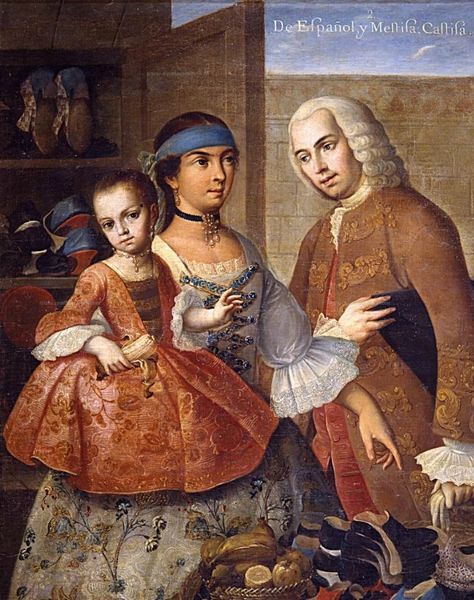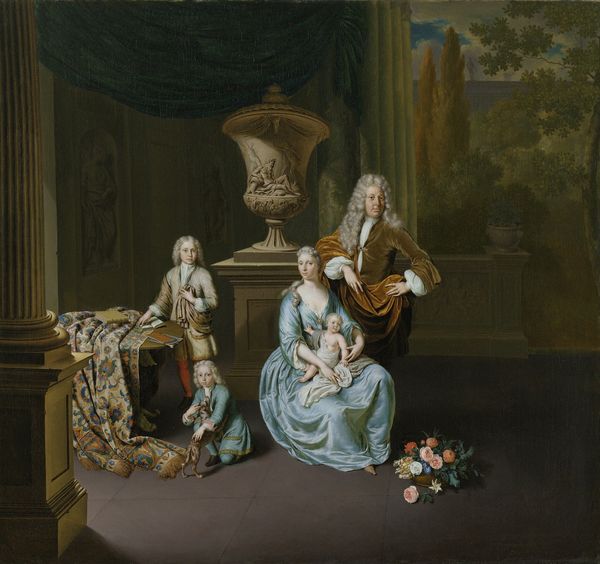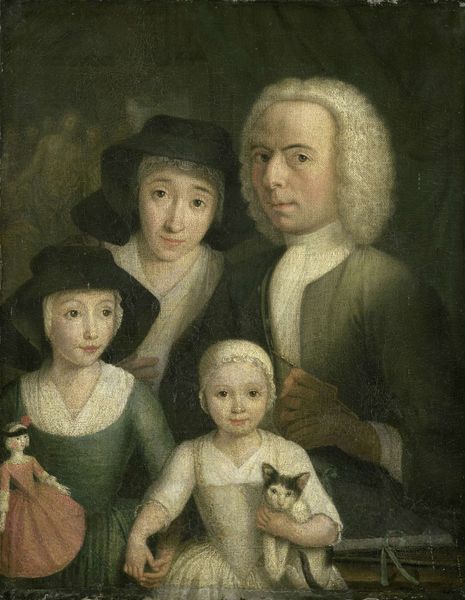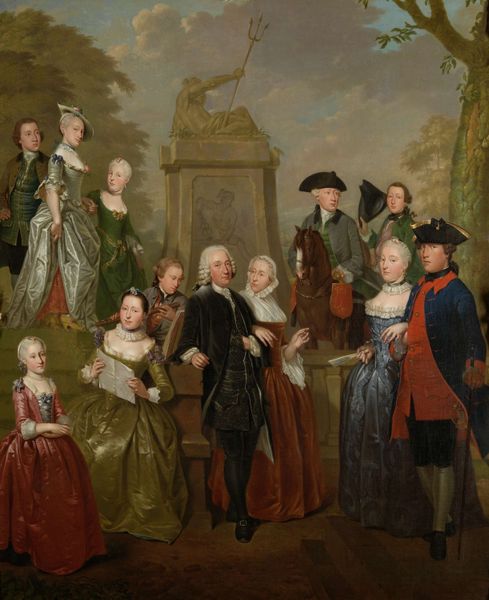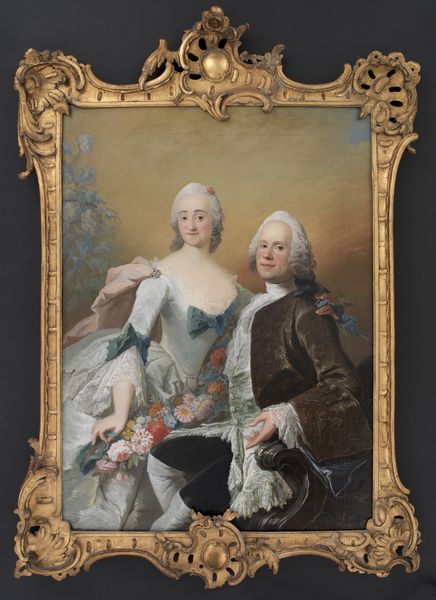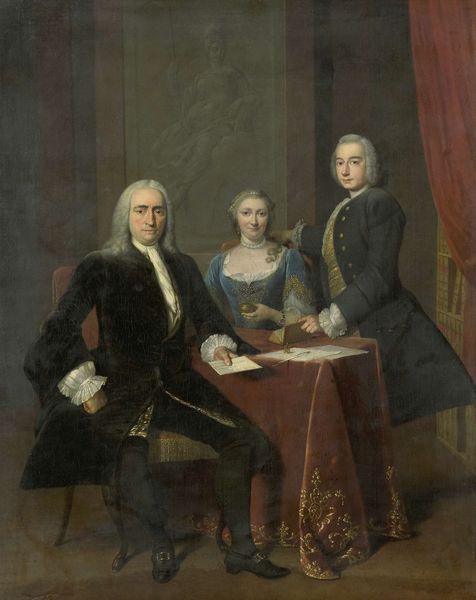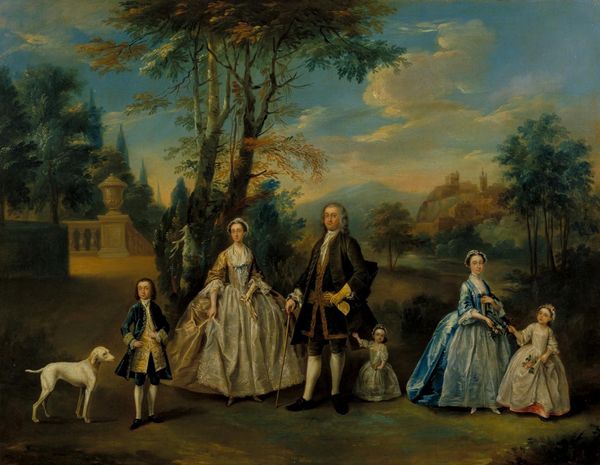
painting, oil-paint
#
portrait
#
baroque
#
painting
#
oil-paint
#
group-portraits
Dimensions: height 148 cm, width 146.5 cm, depth 9 cm
Copyright: Rijks Museum: Open Domain
Curator: Frans Decker’s 1738 oil-on-canvas presents "Willem Philip Kops (1695-1756), with his Wife and Children", an ambitious group portrait very much in the Baroque style. Editor: Stately, very stately! There's such controlled symmetry and subdued material presence—almost a lack of visible brushwork which speaks to wealth in more ways than just showing off the family! Curator: Precisely. These portraits served specific social functions. Commissions like this affirmed social standing and perpetuated the family’s narrative within elite Dutch society. The staging is carefully arranged; Willem Kops' prominent position indicates patriarchal authority, his red jacket a mark of his position. Editor: And the family? The fabrics they wear—the satins, the fine woolens, it's a visual demonstration of conspicuous consumption. Did Decker use preparatory sketches for the fabrics or work straight onto the canvas with models in their clothes? And what about the pigments used? How did the cost impact the image? Curator: Undoubtedly, wealth afforded Decker quality materials and time to complete the piece. Think about the cultural capital embedded: the family, their attire, even the painted landscape visible in the background – all signaling taste, refinement and control. Editor: But, even within the portrait, there are signs of potential unrest or uncontrollable costs in commissioning a portrait of a family of that scale; one of the children is holding what appears to be the reins of a small goat. The children look strangely solemn, almost as if the sittings themselves were long labors! Curator: Child portraiture could be a political affair in these group scenes—it subtly reinforced lineage, inheritance, and expectations surrounding succession, and childhood’s construction as innocence served broader ideological roles! Editor: In a sense, then, Frans Decker isn’t just capturing likeness; he’s manufacturing a carefully orchestrated visual record designed to shape perception and reinforce social structures and ideas. Curator: Exactly! These paintings reinforced the era's established orders, communicating the sitter's perceived position within Dutch society. Editor: Examining this work has really underscored the degree to which art acts as a social and political instrument, as well as being crafted out of various costly materials. Curator: A material record of status, indeed, and its making reinforces the values it represents.
Comments
No comments
Be the first to comment and join the conversation on the ultimate creative platform.
